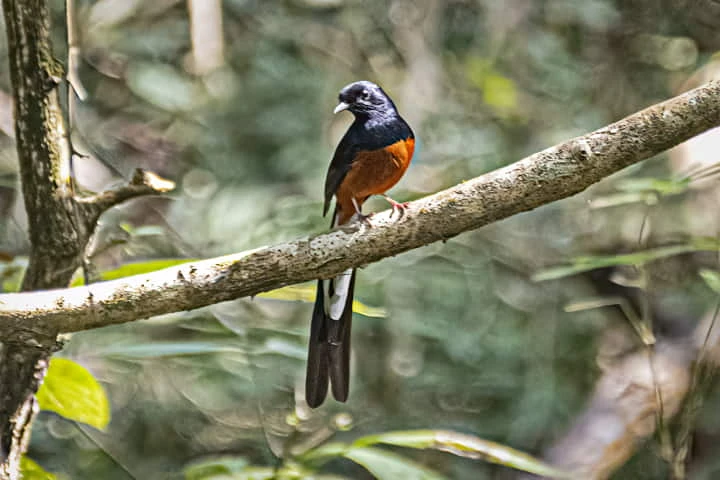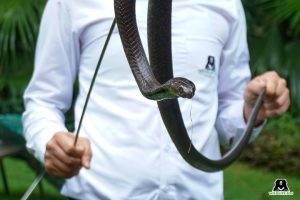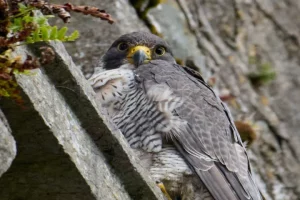“This bird is called White-rumped Shama,” our guide and wildlife expert Onkar Dharwadkar informed us,”please be quick with your camera, before it flies away.”
“Shama..you mean Shama in Urdu”, I asked him.
“Yes sir, but please hurry and take pictures,” Onkar was equally impatient as it was not easy to sight the small birds like Shama in the dense Bandola forest of Goa.
The forest was reverberating with the continuous melodious loud calls of Shama – our target songster bird.
Anytime you go trekking in these kinds of forests, you know it's just as much a sound experience as a visual one and this White-rumped Shama was giving us both – striking plumage and a song to beat the band.
Watch Video: Singing Shama Bird
The White-rumped Shama Thrush (Copsychus malabaricus), loves a dense understory, and will flit in its territory following you as you trek on through. You'll hear him before you see him – a flute-like melody that is throaty and, well, loud. Then you spot him – the deep blue-black feathers that are so glossy, contrasted beautifully by a rufus chest and belly. They have a white rump, and undertail feathers. Females are similar but paler. The tail itself is crazy long, and this helps the shama manoeuver through the thick understory. A long tail enables them to change directions quickly in the dense forest. Their songs are impressive, both in range and volume, making them hard to miss. It is their songs that help us to spot them otherwise it would be very difficult as they merge with the environment.
Native to Southeast Asia, the White-rumped Shama, gained popularity as a songbird/caged pet in the 18th century. The popularity of shama family Muscicapidae has made them a familiar bird in cages in many parts of the world including India, Shama is protected under wildlife acts and cannot be kept as a pet.
The conservation status of the white-rumped shama (Copsychus malabaricus) is categorized as Least Concern by the IUCN Red List.

After the satisfactory photography session with Shama and Onkar, it was time to ponder over the name of the bird. Frankly, it was the first time I heard the Urdu name of a bird, though “Shama'' is perhaps one of the most used words in poetry and Bollywood songs. In Urdu, Shama means lamp or candle that burns.
Poets and songwriters have used the lamp as a strong metaphor in their poetry. They have also elaborated the symbolic relationship between the moth (Parwana) and itself and in this process, they have commented upon the philosophy of life itself that is characterized both by deprivation and fulfilment.
While I was trying to find the origin of the name, my mind started playing the “Shama” song from the Bollywood blockbuster film Raees:
Tu shamma hai toh yaad rakhna / Main bhi hoon parwana / O zaalima, o zaalima.
(The one who is already suffering for you,why torment him even more, O cruel one.)
And one of my favourite song of 1970s film Kati Patang:
Shama kahe parwane se, pare chala ja, Meri tarah jal jayega, yehan nahin aa, Wo nahi sunta usko jal jana hota hai!
(The burning flame tells the moth, do not come near me, else you will, too, burn like me)
Also Read: The art of surgical strike: Courtesy the heron bird




















